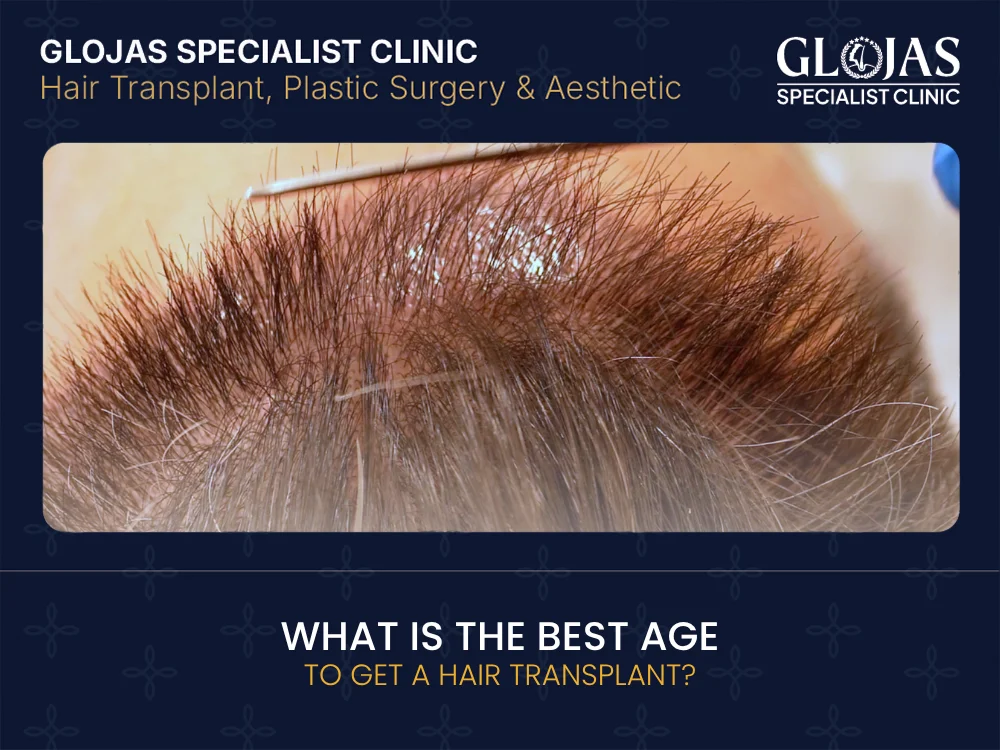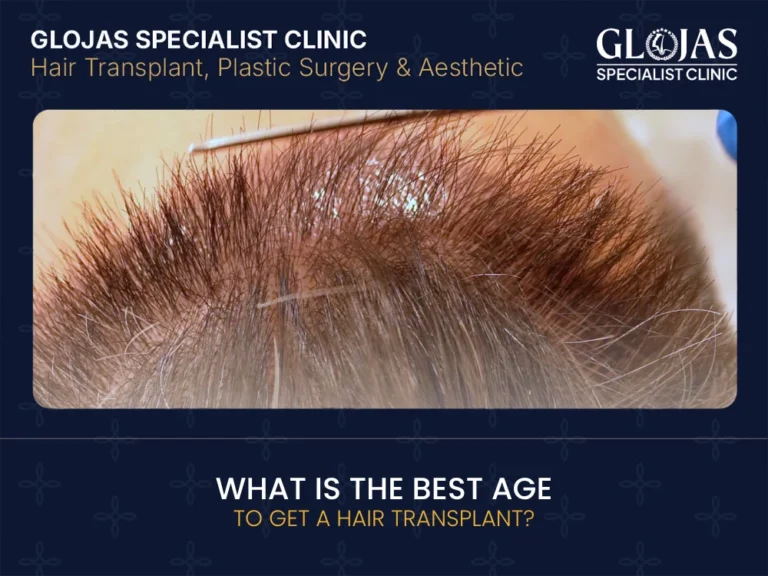In Malaysia, many men and women considering hair restoration ask: what is the best age for a hair transplant? Understanding hair transplant age is crucial to achieving a natural, long-lasting result. In this article, we’ll delve into the science, clinical guidance, common hair transplant age brackets, and local context.
The Role of Age in Hair Transplants
When we talk about hair transplant age, we don’t mean a rigid rule. Rather, we consider how hair transplant age correlates with stability of hair loss, donor hair quality, hormonal changes, and long-term planning. In Malaysia’s context — with tropical climate, strong sun, and distinct ethnic hair types — timing plays an especially important role in optimizing graft survival and appearance.

Why Age Matters in Hair Restoration
Stability of Hair Loss
One of the biggest challenges of doing a hair transplant too early is that your hair loss pattern may not have stabilized. If the hair around the transplanted follicles continues thinning, the final result can look patchy or unnatural.
Leading guidance suggests waiting until late 20s or beyond to allow your pattern of androgenetic alopecia to settle.
Donor Hair Reserve and Quality
Your donor zone (usually the back and sides of the scalp) offers limited follicles for transplantation. If too many grafts are used prematurely, you may exhaust your donor supply, leaving fewer options later on. Aging can also reduce hair density and quality, which is something surgeons must account for.
Hormones, Scalp Health & Healing
Younger patients tend to heal better, but their hair may still be more vulnerable to hormonal fluctuations (especially DHT effects) that can influence ongoing hair thinning. On the flip side, older patients may have slower healing response or comorbidities; but if healthy, they can still be excellent candidates.
Aesthetic and Lifetime Planning
A well-designed hairline must consider how you will age over decades. Transplanting too low a hairline in your 20s, for instance, can look unnatural when you’re 50. Surgeons often design age-appropriate hairlines that maintain balance as you age.
Typical Hair Transplant Age Ranges: Pros & Cons
Below is a breakdown of age brackets commonly discussed by hair restoration experts:
Age Range | What You’ll Commonly See/Considerations | Advantages & Risks |
Under 20 / early 20s (< 23) | Hair loss onset, unpredictable progression | Very high risk of needing multiple revisions or wasted grafts. Many specialists discourage transplant at this point unless exceptional case. |
Mid-20s (25–29) | Hair loss pattern begins to stabilize | Some surgeons accept candidates from 25 upward; risk still present if loss accelerates. |
30s to Early 40s | Hair loss pattern is more predictable | Many consider this the “sweet spot” for hair transplant – good balance between stability, donor quality, and healing. |
Mid-40s and Older | More stable loss, but lower donor density | Good candidates if in good health, though more cautious planning is required. |
In Malaysia, clinics like GLOJAS also take into account ethnic hair thickness and sun exposure factors during planning.
What Do Malaysian Clinics Recommend?
In Malaysia, many hair transplant clinics tend to follow similar international best-practice guidelines:
- Most clinics recommend waiting until at least age 25 for surgical transplant, unless exceptional circumstances exist.
- Some clinics state there is no strict upper age limit, provided the patient is healthy and has viable donor hair.
- GLOJAS has published on the role of age in hair transplant, citing that late 20s to early 60s are often ideal age brackets.
Thus, while surgical decisions are personalized, the Malaysian standard tends to align with global best practices: cautious approach under 25, open possibilities above that, with emphasis on consultation, diagnosis, and long-term planning.
So, What Is the Best Hair Transplant Age in Malaysia?
There isn’t one single “hair transplant age,” but a practical range emerges when combining evidence with clinical experience in Malaysia:
- Ideal range: late 20s through early 40s — this is when hair loss patterns are more predictable, donor hair is still robust, and long-term planning is feasible.
- Younger patients (under 25): may be evaluated, but many clinics delay surgical intervention and prefer non-surgical measures first.
- Older patients (50+): can still be good candidates if overall scalp health and donor hair allow it.
If you’re in Malaysia and considering hair restoration, the best first step is a diagnostic consultation that includes scalp mapping, hair miniaturization studies, family history, and donor zone assessment.
Key Decision Factors Beyond Age
While hair transplant age is often discussed as a benchmark for eligibility, it’s far from the only—or even the most important—factor. The ultimate success of a hair transplant depends on a combination of clinical and personal considerations that go beyond mere numbers. Here are the crucial “qualifiers” that truly determine whether someone is a strong candidate for a hair restoration procedure:
Stability of Hair Loss Trend
The pattern and rate of your hair loss reveal more than your birthdate ever could. Surgeons assess how your hairline and crown have changed over time to predict future thinning. If your hair loss is still aggressive or unstable, performing a transplant too early may lead to patchy, unnatural results as native hair continues to recede around the transplanted area. A stable pattern, ideally observed over several years, provides a solid foundation for lasting, natural outcomes.
Donor Hair Supply
Your donor area—the region at the back and sides of your scalp—plays a defining role in what’s possible. Surgeons examine its density, hair shaft thickness, and scalp flexibility (laxity) to determine how much graft material is safely available. A limited donor supply requires strategic planning to avoid overharvesting, which can compromise both appearance and future treatment options. High-quality, dense donor hair allows for fuller coverage and more natural blending.
Health Status
Good general health supports faster healing, reduced risk of complications, and better graft survival rates. Conditions such as diabetes, autoimmune disorders, or circulatory issues can affect recovery and transplant success. Additionally, medications like blood thinners or certain hormonal drugs may interfere with surgery or postoperative outcomes. A thorough preoperative medical evaluation ensures that your body is in the right condition for surgery.
Realistic Expectations
A successful hair transplant isn’t just about achieving a youthful appearance—it’s about creating a look that harmonizes with your facial features and future hairline. Patients must understand the limitations of their donor supply and the achievable density. Surgeons emphasize designing age-appropriate hairlines and coverage areas to ensure satisfaction that lasts decades, not just months.
Future Planning
Hair loss is often progressive. A skilled surgeon will approach each case with long-term strategy in mind—reserving donor grafts for potential future sessions and creating a hairline that will still look natural as more hair is lost over time. This foresight prevents the “island effect,” where transplanted hair remains dense while surrounding areas thin out. Strategic mapping ensures sustainability and aesthetic consistency.
Surgeon’s Certification and Credentials
Perhaps the most overlooked factor is the surgeon’s expertise. Choosing a board-certified hair restoration specialist, particularly one accredited by recognized organizations such as the American Board of Hair Restoration Surgery (ABHRS) or the International Society of Hair Restoration Surgery (ISHRS), ensures adherence to high ethical and technical standards. An experienced surgeon brings not just technical skill, but also an artistic eye essential for natural results—where graft direction, density, and hairline design all work in harmony.
Why Having a Certified Clinic Matters: GLOJAS Specialist Clinic & Credentials
When it comes to hair transplant, who does the surgery is just as critical as when. GLOJAS Specialist Clinic has over 25 years of expertise in hair restoration. We are ABHRS- and ISHRS-certified—meaning our surgeons adhere to international best practices and continuing education.
We strongly believe that even with optimal timing by age, the outcome ultimately depends on the artistry, planning, and graft management of your surgeon. At GLOJAS, we tailor every treatment to your hair loss stage, ethnicity, and long-term goals.
If you’re in Malaysia and curious about your candidacy, don’t wait. Book a consultation with GLOJAS Specialist Clinic—trusted, certified, and experienced. Let us design a personalized roadmap for your hair restoration journey.
10 Frequently Asked Questions (FAQs)
- Is there a minimum hair transplant age to get?
There’s no strict legal age, but many hair surgeons discourage doing one before age 25 because hair loss patterns are not stable yet. - Can someone in their early 20s still get a transplant?
In rare, exceptional cases, yes—but usually only after thorough evaluation and often alongside medical treatments first. - Is 35 the “best” hair transplant age?
It’s often seen as ideal because by then hair loss and donor zones are more predictable. But “best” varies per individual. - Can people over 50 still benefit from hair transplant?
Yes—if they are in good health and retain suitable donor hair. Older age alone isn’t a disqualifier. - What happens if I do a hair transplant too early?
You risk unnatural results later as your natural hair continues to thin, and you may need subsequent surgeries, possibly using scarce donor hair. - How long do transplanted hairs last?
Transplanted follicles (from DHT-resistant donor zones) tend to last permanently; but existing non-transplanted hair may continue thinning. - How is the “right hair transplant age” assessed clinically?
Surgeons evaluate hair loss progression, scalp mapping, donor density, general health, and patient goals—not strictly age. - Does ethnicity or hair type affect the ideal hair transplant age?
In Malaysia, hair tends to be straighter, thicker, and under stronger UV stress; such traits influence graft choices and timing. - What non-surgical options exist before transplant is suitable?
Treatments like minoxidil, finasteride, PRP (platelet-rich plasma), low-level laser therapy, and lifestyle adjustment may help slow progression. - How do I choose a reliable clinic or surgeon in Malaysia?
Look for credentials (ABHRS / ISHRS membership), decades of experience, published results, client reviews, and a transparent diagnostic process.
Conclusion
When it comes to the ideal hair transplant age, there is no one-size-fits-all answer—especially in Malaysia, with its unique hair types and environment. That said, most experts converge on late 20s to early 40s as a favorable window. Under 25, the risks of instability are higher; over 50, donor limitations may need careful planning.
However, beyond hair transplant age, what truly matters is your hair loss pattern, donor hair health, surgical planning, and the clinic you choose. At GLOJAS Specialist Clinic, with over 25 years of experience and full ABHRS / ISHRS accreditation, we tailor every transplant to your personal circumstances—age included.
👉 Ready to take the next step? Book your consultation with GLOJAS today, and let’s chart the best path forward for your hair restoration journey.
